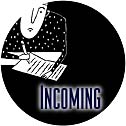
Letters to the editor:
[email protected]
|
 |

One Who Was Probably There in the '60s
Jack Neely's Nov. 7 piece on 1970 and the "White House" [actually on Ruth Williams' observations in the book, Younger Than That Now] brought back quite a few memories of my small part in what I'm sure will go down as a most unusual and interesting era in the city's history. I remember some of the people and events he wrote of, though my memories are somewhat different. Bearing in mind the dictum that if you claim to remember the Sixties you probably weren't there, allow me to proceed.
I first encountered Knoxville's counterculture in 1970. A young woman of whom I was quite fond had an offer to teach at the Knoxville School Corp., an alternative school for young children run by Mary Oliver at the Unitarian Church. She came to town to check it out, and as I had nothing better to do, I came too. Our friend the artist Margaret Gregg found us a place to stay, in the infamous White House. It was the first time we had deliberately spent a block of time together. The job offer came through, and we moved to Knoxville, to a three-room apartment at 1530 Highland, a stone's throw from the White House and next door to what we called the "Epworth Church."
Much of the cultural and countercultural activity in Fort Sanders at the time went on under the aegis of the Epworth Ministry. This, we were told, was an ecumenical program put together by several Protestant denominations to minister to the hippies in Fort Sanders, who clearly needed it. The ministry was given two rundown churches on 16th Street, the present Laurel Theater and the "Epworth" church on Highland, and some other properties including the White House. Two Episcopal priests ran it, Bill Daniels and Renfro Sproul. Their offices were in the Epworth Church, along with several radical organizations and Margaret Gregg's studio.
Things were chaotic at Epworth in 1970. The apartment my friend and I moved into had been occupied by a young man whom Epworth had hired to counsel youth not to use drugs. This effort came to an abrupt end when the TBI confiscated the young man for dealing, which freed up a living space just when we needed one. It proved to be a fairly calm place to live, though for a couple of months watery-eyed individuals would peck on the window at night to ask, "Hey, you got any dope, man?"
The White House was on the other side of the church from our apartment. At the time it was indeed white, though at some point when it needed a paint job it became multi-colored; all the occupants and friends turned out for the painting, and the spirit of the age encouraged every participant toward self-expression. I remember some of the people in your article—Carroll Bible, who was pretty cogent in most conversations I had with him, and Peter Kami, the first of many foreigners I have known who seem to have a clear-eyed certainty about the realities of class and struggle that is usually denied to Americans.
There were students, activists, druggies, musicians, spaced-out Viet vets, a minister seeking to rediscover his faith, and a single mom who found in the White House some of the social support that the State of Tennessee did not offer. There were drugs aplenty. I don't remember anyone with a "harem," and if there was a lot of casual sex I somehow missed it.
What stands out instead in my memory is a great deal of creative energy. I spent the winter working with a friend from the Highlander Center on a record of coal mining songs, which led in 1971 to the first Jubilee festival. The Epworth Church was an extraordinarily good space for such a thing, with good acoustics and the sort of ambiance that allowed friends to visit at the back of the hall without disrupting the people watching the stage program.
While a lot of Epworth and the White House were reflections of a passing phase of history, the phenomenon had a surprising number of long-lived offshoots, like the Laurel School, Monday night folk dancing, and the Knoxville Old Harp Singers. Jubilee Community Arts is a direct descendant. The Laurel Theater which is its home is proof positive that the energies of the era were not all self-centered and destructive; when the structure was badly damaged by fire, many people worked long and hard to restore it to the beautiful space we know today. The concert there last month, in which Appalshop's Voices from Home project presented John McCutcheon and a number of other musicians who came together at Epworth in the early 1970's, was a reflection of an era that deserves to be remembered with some respect.
As I do on a very personal level. In 1974 my friend and I got married in the White House. It was deserted and about to be torn down, but we wanted to acknowledge the place that had been so important in our coming together. So after a dinner at the original Bahou on Forest, the wedding party moved to what was left of the infamous structure for a candlelight ceremony. The marriage has lasted a good deal longer than the house, a fact for which the house and what it represented may take some credit.
Rich Kirby
Appalshop
Whitesburg, Kentucky
|





